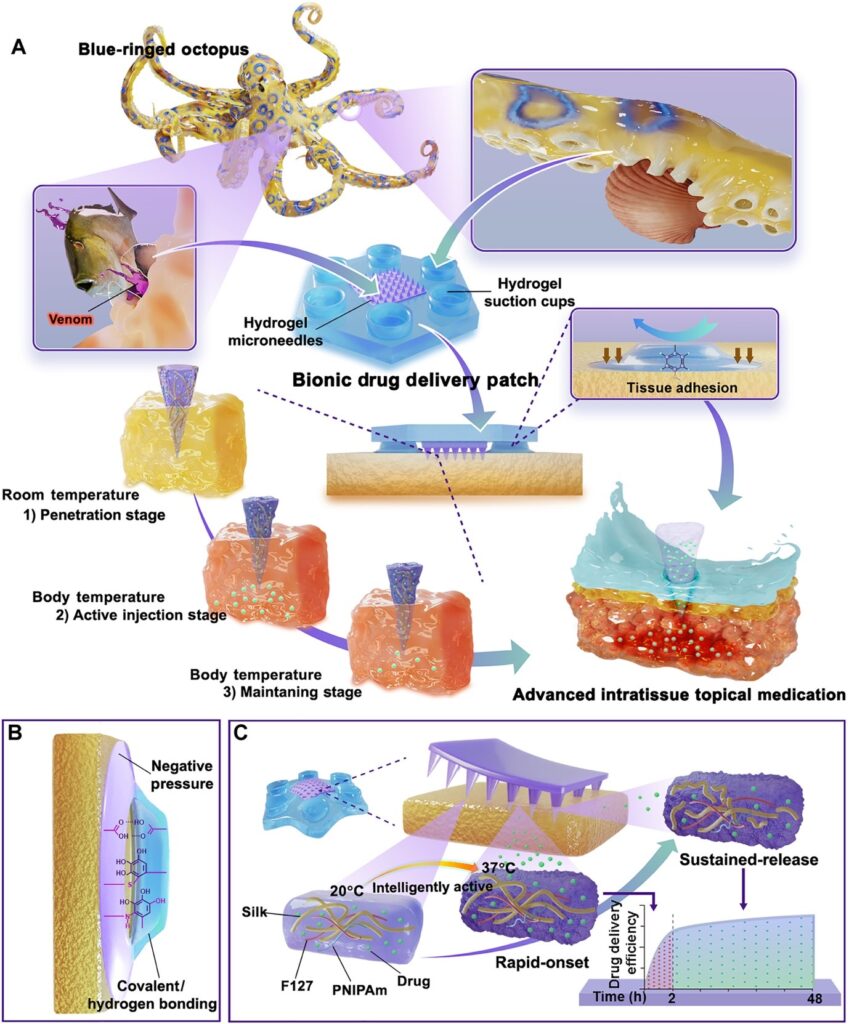A nasty marine predation technique has been co-opted for a good cause.
Your Back Page scribe has just returned from a brief winter excursion to upper Western Australia, where we had the privilege of snorkelling with whale sharks and other creatures of the beautiful Ningaloo Reef.
This paper about a drug-delivery development inspired by the blue-ringed octopus gives us an excuse to keep thinking about our holiday a bit longer before reality properly sets in.
Last Tuesday, snorkelling off a beach on the Coral Coast, we floated over a large octopus, fortunately not the blue-ringed kind. We watched each other for about 10 minutes as it sat flobbling, pulsating and whipping the odd tentacle about.
At one point its mantle, which had been red, brown and white to match its corally surrounds, flashed bright yellow for an instant, before reverting to camouflage.
If this was a signal or warning to us we couldn’t interpret it, but we eventually paddled off, leaving it sitting in its weird Venn intersection of wonder and profoundly alien creepiness bordering on horror. Suckers … ugh.
The BP would never be able to overcome our queasiness for long enough to study ingenious mechanisms like an octopus’s chromatophores for human applications, so we admire those who do.
While chromatophore tech might bring us at best a new range of military camouflage gear or Hypercolor T-shirt, the legitimately scary blue-ringed octopus’s venom delivery method has inspired a better way to deliver drugs directly to tissues.
Intratissue topical medication, as the new paper in Science Advances says, “has the merits of quick action, high drug bioavailability, and minimal invasiveness, supplying rapid and effective treatment in inhibiting tumor growth, reducing organ diseases, or accelerating trauma healing”.
However, adhesion and controlled drug delivery are difficult to achieve on mucus-drenched bits of tissue such as ulcers and tumours.
Enter our little blue-ringed friend, which can – all thanks to those suckers – grab its prey amid the famously wet conditions of the ocean, bring it to its mouth and bite through shell to deliver a lethal dose.
The authors report that they were able to develop a wet-bonding microneedle patch with controllable drug delivery, comprising tiny hydrogel suction cups that can achieve and maintain adhesion for several days, while hydrogel microneedles puncture the tissue to administer drugs at first rapidly and then in a long-term maintenance phase.

Zhou Zhu et al., Science Advances, 21 Jun 2023, Vol 9, Issue 25
As impressive as this is, if the Back Page is ever in a position to need such medication, we don’t want to be told our treatment comes courtesy of a venomous eight-tentacled sucker-covered beastie – the nocebo effect might overpower the benefits.
Send story tips to penny@medicalrepublic.com.au and sleep free of tentacle dreams.


